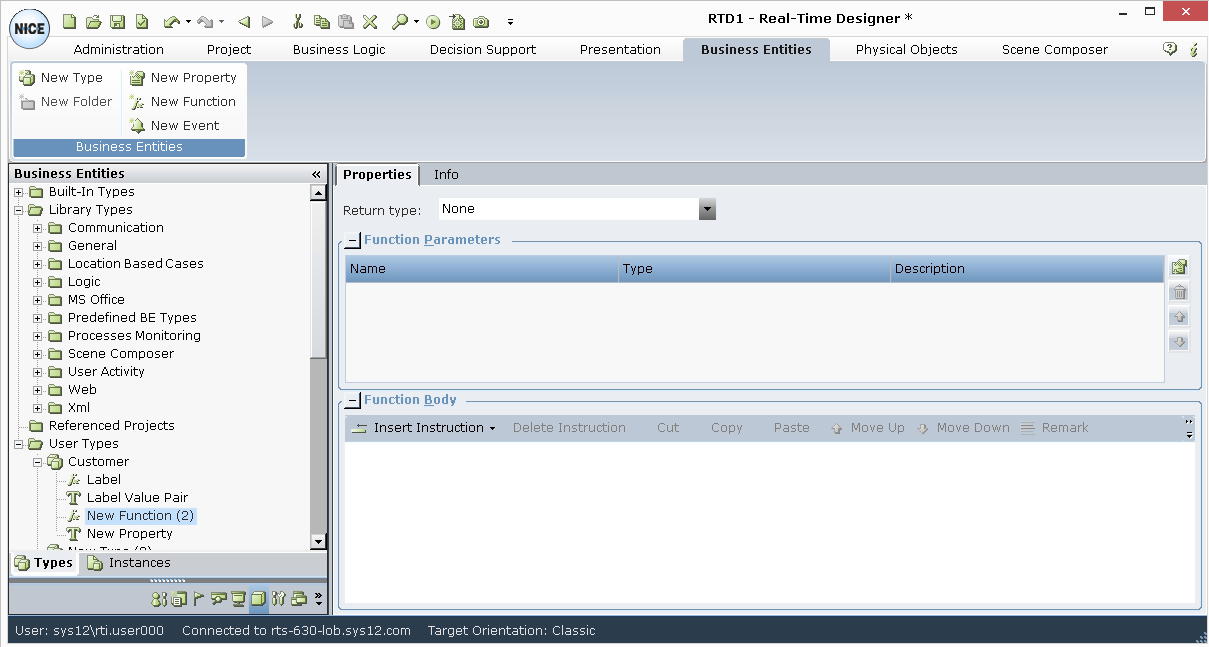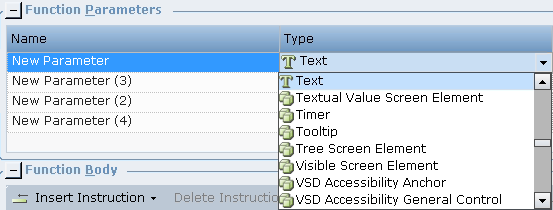The function of a business entity can perform any action that is defined in its body, such as to perform a calculation, execute an SQL query, assign a value to a property, or sort a list. Some functions return a value.
The function of a business entity is activated when one of its events triggers it. See Defining a Business Entity Type Event for a description of how to define an event that triggers this function. A business entity's function can also be triggered when you define a business rule or an event handler.
A business entity can activate itself. All other Real-Time Designer objects must be activated by another object, such as a rule.
To define a new user type function:
| 1. | Select a business entity user type in the tree. |
| 2. | On the ribbon, click New Function. |
A New Function branch is added under the selected business entity user type.

| 3. | In the Return Type field, select None (meaning that no value is returned by this function) or select a user type to specify whether information is returned by this function and into what user type it is returned. |
| 4. | In the Function Parameter area, define the parameters to be used by this function as follows: |
Click  to add a parameter to the list.
to add a parameter to the list.
Click  to delete a parameter from the list.
to delete a parameter from the list.
Click  to move a parameter up or down in the list.
to move a parameter up or down in the list.
| 5. | After you add a parameter, you can select its Type from the drop-down menu: |

| 6. | From the Insert Instruction drop-down menu, select an instruction: |

See Action Editor for instructions on defining the action to be performed.
